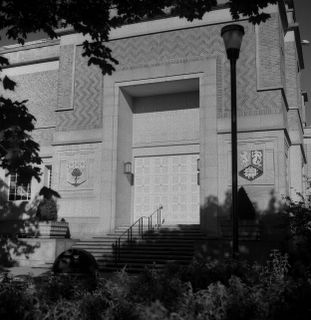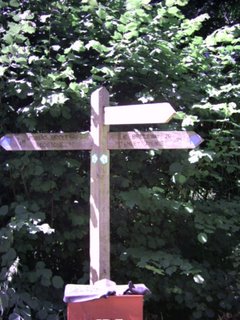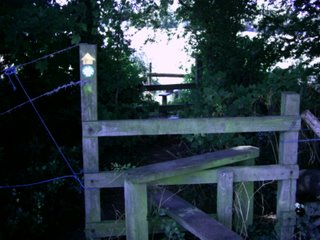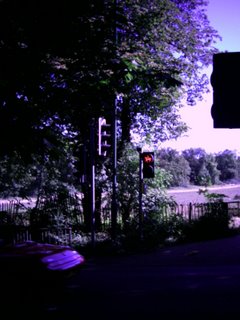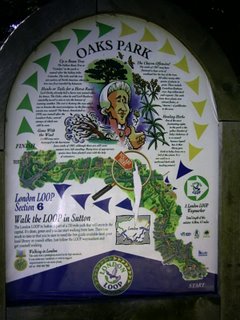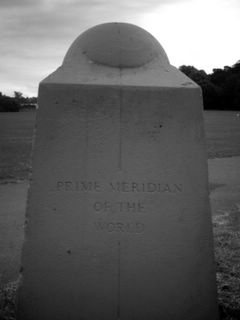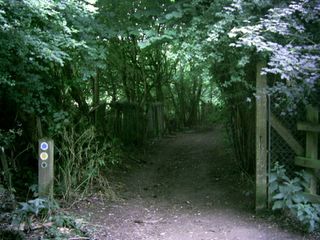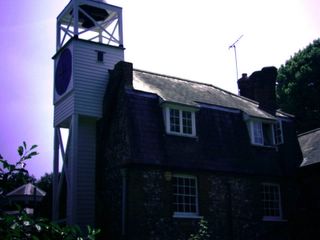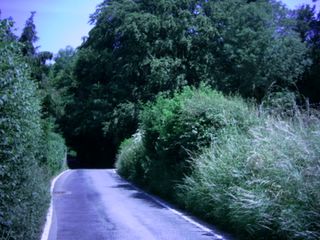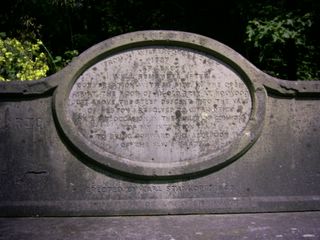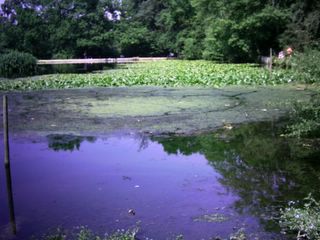It took two hours to get to the start point of this walk, as I had to go via Sutton and then a bus to Banstead. I didn’t get lost like when I left this part of the loop though as the signage was good. Crossing the golf course at Banstead was hairy as there were a few games in progress and some of the undergrowth was very dense: although the path was easy to make out I had to duck in many places.
I soon left the golf course behind and came out into a quiet suburban millionaires row. The name of the street should have been Driving School Alley as I counted at least five driving school cars there. This part was certainly ‘By roads not adopted by woodlanded ways…’ and the streets were very pleasant here.
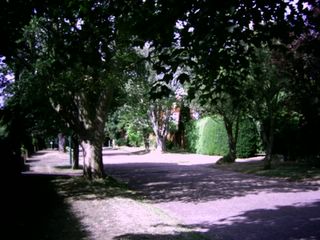
Road not adopted

Going down Northey Avenue I entered the County of Surrey and the borough of Epsom and Ewell.

Epsom and Ewell boundary marker

I passed the modern St Paul’s Church and Centre and walked down Nonsuch walk, which is separated from each side of the main road by a hedge of trees. I soon left the suburban streets behind and entered the Woodland Trust Nature Reserve at Warren Farm. Skylarks were apparently nesting there although I didn’t see any larks ascending. Crossing a ghost road,

The ghost road

where building was prevented by the second world war and the formation of London’s green belt I entered Nonsuch Park and had a look at the battlemented Nonesuch House built in the 19th Century by Sir Jeffry Wyatville. The Loop passes by Henry VIII’s Banqueing house which isn’t even a ruin but the site is marked by a low brick wall. Coming into Ewell proper, I passed the 15th Century church tower which is all that remains of Ewell Church as it was rebuilt by Lord Roseberry in the 19th Century.
I went into Ewell and had a look round including a very expensive bookshop that could not take cards. The official finish point for Walk 7 was Bourne Hall, a space age library, museum and community centre for Ewell. I visited the museum which I found average but the building was very good. The entrance arch had a dog on top of it which commemorates a dog that saved a child from drowning.
Walk seven ends here.

loop sign Bourne Hall

I continued along walk 8 which begins at the source of the Hogsmill river in Bourne Hall Park and continues until the Hogsmill reaches the Thames at Kingston. This really made the day’s walk too long but I managed it. Sir John Everett Millais used the Hogsmill for his painting of the drowning of Ophelia, but the jolly thing about this section of the Loop was the number of wild bramble bushes that were in fruit. I ate my fill of the blackberries of which some were sweeter than others, but all were ripe and ready for picking. There’s not much of interest along the Hogsmill but here is a picture of an ingenious solution to the problem where a river is culverted and pedestrians also need to use the route.

Hogsmill Culvert and walkway

There is also a go-cart track en route. I passed some pretty white cottages

The white cottages Malden
 and St John The Baptist church Malden which has building work done in the 19th and 20th centuries alongside the original. The new build looks to be thoroughly in keeping as is most development here. I saw a house with a garage built in the manner of a sixteenth century barn with large oak timbers. There’s no shortage of craftsmanship if you have the money to pay for it..
and St John The Baptist church Malden which has building work done in the 19th and 20th centuries alongside the original. The new build looks to be thoroughly in keeping as is most development here. I saw a house with a garage built in the manner of a sixteenth century barn with large oak timbers. There’s no shortage of craftsmanship if you have the money to pay for it..Deviating from the river, the walk passes Berrylands Station which looks decidedly makeshift. After some boring suburban streets of Kingston I came onto the Hogsmill again, passing the Kingston Guildhall and crossing the medieval Clattern Bridge. Kingston needs a bit more justice doing to it but I will be there again.
 The Clattern Bridge Kingston
The Clattern Bridge Kingston 
I spent my evening at the Holland Park Opera, many thanks to Alistair. The performance was Tchaikovsky’s ‘The Queen of Spades’, which dramatises Puskin’s story about the man who wants to win at Farobank at all costs. Most enjoyable!

